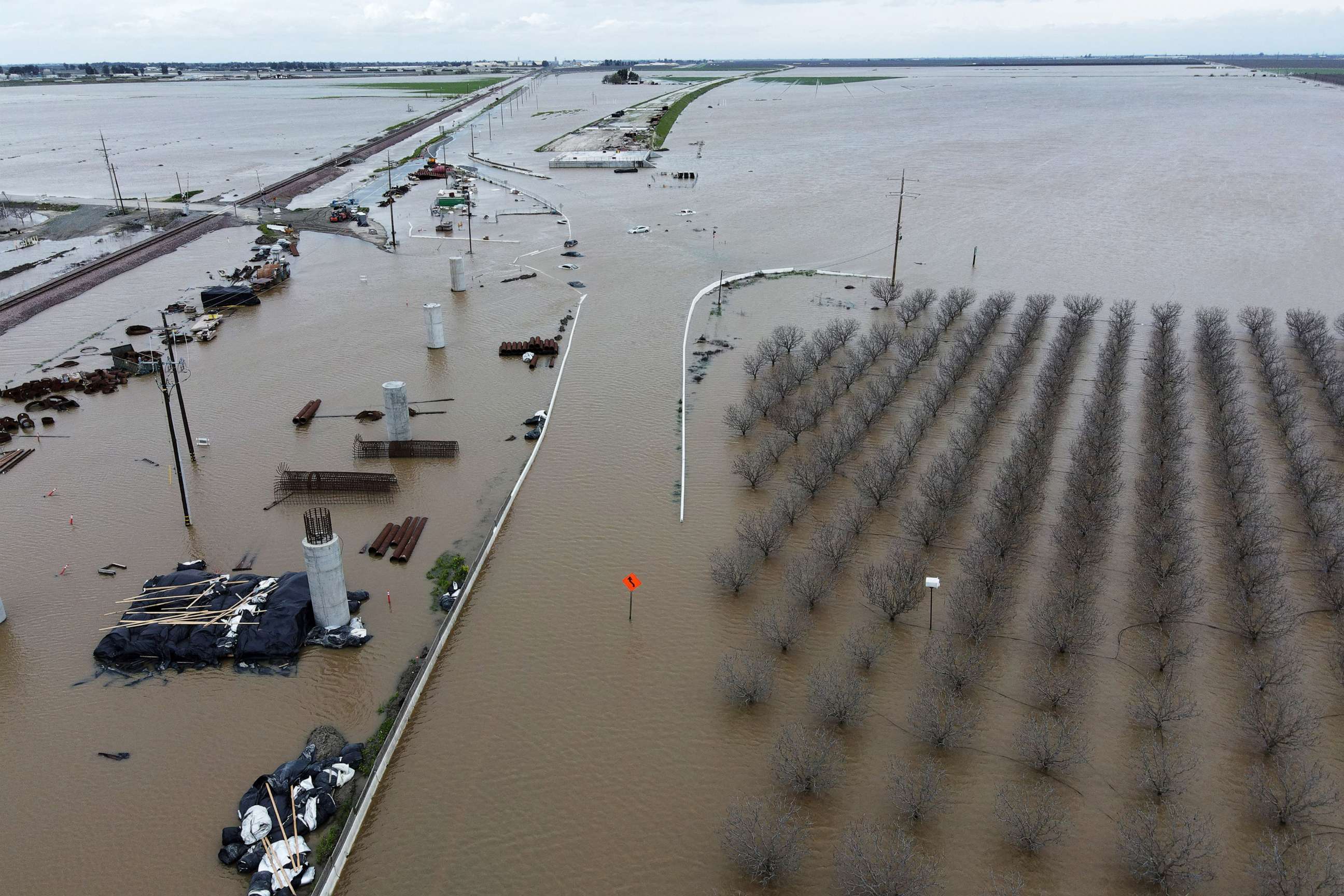'Catastrophic level of water': Central California battles farmland flooding
The latest atmospheric river storm to batter California has led to evacuations and flooded farmland. As the snowpack on the Sierra Nevada mountains melts, flooding in the Central Valley will remain a concern for weeks and months to come, experts say.
There has been a "catastrophic level of water," Tricia Stever Blattler, executive director of the Tulare County Farm Bureau, which represents more than 1,100 farms and ranches in the San Joaquin Valley county, told ABC News.

Channels that are designed to handle flood waters are "all running very high and very, very fast," with many experiencing "structural breakdowns," she said.
"We're still just experiencing so much more water in these storms than can possibly be held back by these dams," she said, calling this a "50-year event."
"There's a lot of cropland underwater right now," Stever Blattler said. "I can't even begin to tell you the numbers -- north of 50,000 acres. Maybe closer to 75,000, 100,000."

Recent floods have led to an evacuation order for parts of Tulare County, with the west side particularly hard-hit by floodwaters after breaches in waterways. Dairies also had to evacuate their cows due to flooding and some creameries have had to suspend operations, which could further impact dairy operations, Stever Blattler said.
Tulare County Sheriff Mike Boudreaux said in a video message earlier this week that there haven't been any fatalities reported, "but what we are seeing is devastating impacts to our agricultural community and farmland."
In neighboring Kings County, the former Tulare Lakebed -- what was once the largest freshwater lake west of the Mississippi before being drained more than 100 years ago for farming -- has also been filling back up in recent weeks with flows from several rivers and creeks amid the onslaught of rain.
Crops including tomatoes, onion, garlic and cotton are grown in the region, though planting in some parts will likely be delayed due to the floods, Stever Blattler said. Standing water in lower-gradient sections of Tulare County could also damage the area's almond, pistachio and orange trees, she said.
"Crop acreage will be diminished for a while," she said.

As the region recovers from the latest round of flooding rain to hit the state, officials are also preparing for the record historic snowpack on the Sierra Nevada to melt -- bringing with it the threat of additional flooding.
In anticipation of a potentially record Kings River runoff season, the U.S. Army Corps of Engineers, Sacramento District this week began a "rare flood release" from Pine Flat Dam into the old Tulare Lakebed, the Kings River Conservation District said.
The flood release, which is to make room in the reservoir for additional rain and melting snow, could last until the summer, officials said.
"Everybody's working together around the clock to share data to inform those decisions," Rick Brown, a spokesperson for the U.S. Army Corps of Engineers, Sacramento District, told ABC News. "Obviously, we're looking at the Sierra Nevada mountains -- we've got enough snow up there to fill up our reservoirs probably a few times over."




